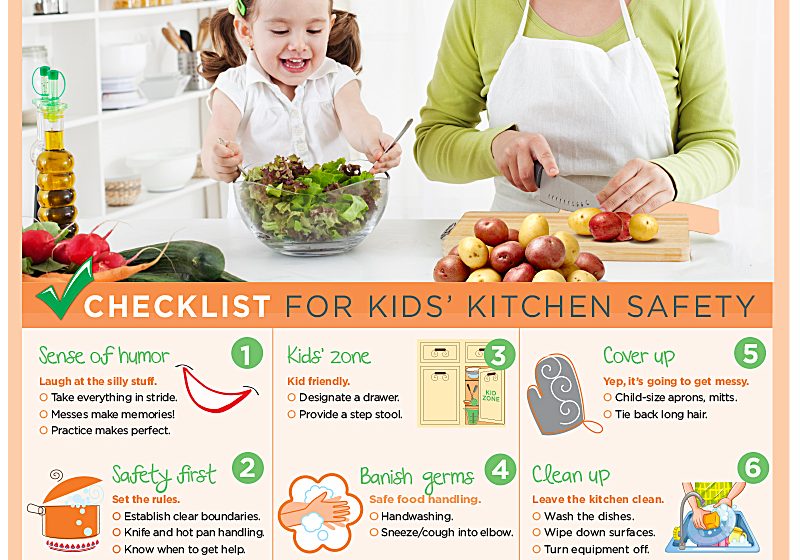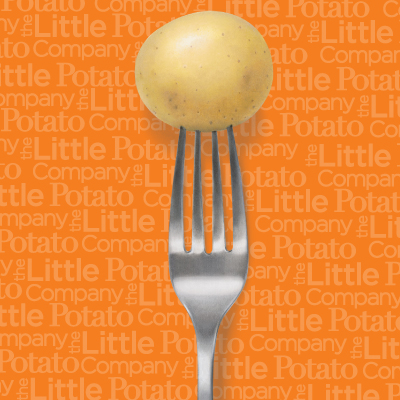Checklist for kids’ kitchen safety

Things generally start well in the kitchen with little ones—that is, until you turn around to turn off the burner and your assistant inadvertently launches a bag of flour, spewing 10 pounds of white powder across the kitchen floor, counter, cupboards and anything else in its path. It’s just par for the course. Messy, fun and a bit chaotic pretty much sums up cooking with kids. But you’ve gotta love it. Not only is it precious time together, it’s a terrific opportunity to teach about the essentials of food, nutrition and meal planning. It’s also a chance to talk about, and practice, kitchen safety.
Before you start…
- Get the OK – Depending on their age, children should always ask permission to use the kitchen.
- Divide tasks – Discuss things that mom/dad do (strain hot pasta) and that kids do (measure spices).
- Supervise – Closely monitor all potentially harmful activities—boiling, baking, blending—but give them lots of room to tackle things like kneading, stirring and washing.
- Checklist for Kids’ Kitchen Safety:
1. Sense of humor
If the oatmeal bubbles over in a mini volcano of goo, just laugh. Realize bags of rice will be tipped, recipes will flub and dishes will shatter. Those are all replaceable. Our kids, of course, aren’t—and the memories you make together are precious. And of course, practice makes perfect. Bring it on!
2. Safety first
Set the rules – No running, how to carry/hold knives, handling hot pots and pans, using pot holders, no towels on the stovetop, using a timer, turning off the stove/oven and never leaving the kitchen unattended.
Establish clear boundaries – areas where children can work only under close supervision, such as the stove-top, oven and barbecue grill.
Know when to get help – Discuss what to do if an accident happens.
3. Kids’ zone
Make your kitchen kid-friendly – remove any dangerous items (sharp knives, blenders, electric mixers) or anything fragile from the prep area. Add extra rags and keep a fire extinguisher nearby.
Designated drawer – Give them a designated drawer with their own (safe) utensils: sturdy rubber, plastic or silicon-handled and age appropriate. Provide child-safe knives – Kids five and older can cut soft foods (bananas, Little Potatoes, cheese, cooked veggies) with a plastic or child-safe knife.
Provide a step stool – Use something sturdy so kids can reach work surfaces and see well.
4. Banish germs!
Remind them of the importance of safe food handling when using meat, fish, eggs and poultry and why hand washing is required to stop the spread of germs or cross-contamination. Go over the sneeze/cough-in-the-elbow trick.
5. Cover up
Yep, it’s going to get messy! Outfit the kids with child-size aprons, mitts (silicone-lined are good) and be sure to tie back long hair.
6. Clean up
This one sometimes falls by the wayside, but set aside time to talk about leaving the kitchen clean, how to safely wash the dishes, tidy up and wipe down work surfaces, and double-checking that all equipment is turned off at the end.
For more, see our age-appropriate child cooking tasks. 
Find the best kid-friendly recipes.
HOW HAVE YOU CREATED A SAFE KITCHEN ENVIRONMENT FOR COOKING WITH THE KIDS? CAN YOU SHARE YOUR TIPS AND INSIGHTS?
To get more tips on nutritious eating, plus find new delicious and healthy recipes, sign up for our monthly newsletter. And join the social media conversation! If you have questions, comments or quips, don’t hesitate to get in touch: info@littlepotatoes.com.
Did you like what you read?

